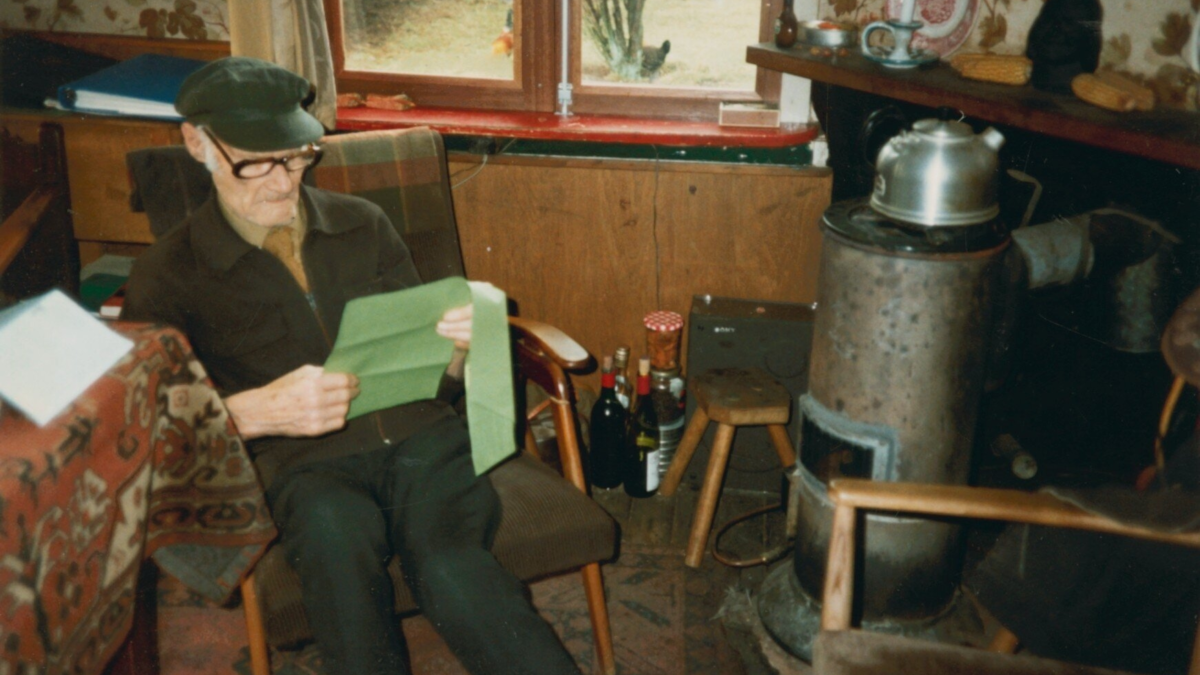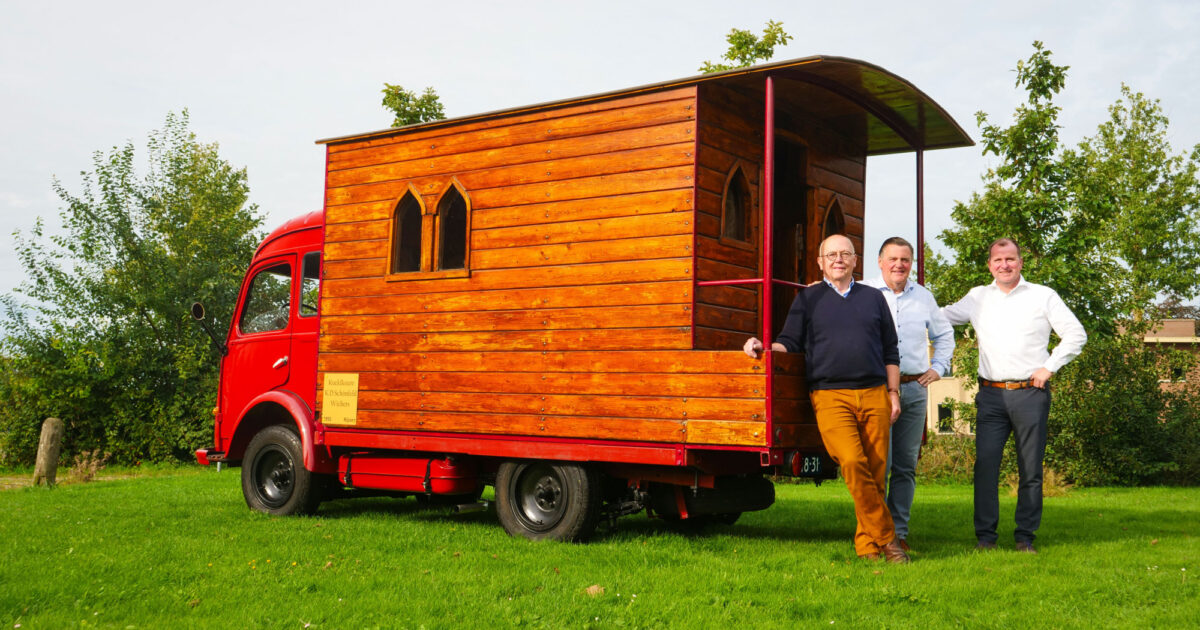Karel Diederick Schönfeld Wichers (1901-1992) is the son of the Rijssen notary and the older brother of writer Belcampo, Herman Pieter. When Karel was 6 years old, the family moved to Rijssen and lived in the notary house, an impressive building in the center of Rijssen. The brothers grew up in Rijssen and both studied notarial law.

Better free time than money
Karel works as a junior notary for his father. He is seen as the successor to his father, who died in 1939. The story goes that on his way to the office to be sworn in, he turns around and walks back home: he has changed his mind. “I’d rather have free time than money,” he said. He remains a candidate notary and spends his free time traveling with the Kueklkoare and writing books in the Rijssens/Twents dialect.
Karel has a wooden structure built on the chassis of a Renault truck. You can sit here with at least six people. A tent is provided for the overnight stay. The wooden table can also be placed outside.
The superstructure will have typical ‘Gothic’ windows. With this combination, which he calls the Kueklkoare, he travels extensively through Europe, including Morocco, from 1955 onwards.

From those countries, family and friends regularly receive densely written cards, which Karel often begins with ‘Verearde kunnegn’. In Rijssen you can also follow where he is and what he is experiencing.
Sometimes he travels alone, sometimes with a companion, such as the artist Broeze from Elsen, sometimes with young people from Rijssen. Traveling is done on spec; people have not yet heard of travel insurance.
Red wine
Tonny Peters, who interviewed friends of his, writes: ‘The trips were low-budget. The food was simple and monotonous, but after a long day of walking, cycling or traveling with the Kueklkoare, brown beans with canned sausages tasted excellent; as well as bread with cheese with a large pot of coffee. Mr Karel was frugal but not stingy, so local dishes also had to be tasted. It often resulted in suspicious looks from his traveling companions. One thing was not skimped on: wine. It usually took a while before Mr. Karel got the young people to drink red wine, but after that it was always ensured that there was sufficient stock.’

Karel enjoys living in the large notary house, he prefers to spend his time in a simple house in the Rijssense Veld. Here he wrote, among other things, the Rijssens dialect dictionary, which was published in 1959. Twenty years later, he published the Dutch-Twents Dictionary, which was followed up in 1983 with a Twents-Nederlands edition. In 1985 Noar ‘t vuerspiejege aejlaand, a report of a six-week cycling trip to and on Sicily, was published. In 1989 Reajsbreeve follows oet de Kueklkoare, a collected series of stories about traveling on foot, by bicycle and in the Kueklkoare through France, Spain and Italy.
‘inflated stuff’
Although he can be alone, he is not a hermit. Family, friends and young people are welcome in the Rijssense Veld. A Tarzan garland hangs in the tall trees, with which children can have fun.
In the house in the forest, people sit together on summer evenings until late at night. Sometimes Karel has already gone to sleep himself. On his birthdays, with music and wine, family members, colleagues, former traveling companions and people who mean something in the field of dialect and local history come. Karel likes conversations, but does not like to speak in public; he doesn’t like ‘bloated stuff’.
Karel died in 1993. ‘Karel Schönfeld Wichers was a source of inspiration for many through his lifestyle, his knowledge of dialect and local history and his love for music. His old friend Jan Eshuis and several loyal comrades watched over Karel in his last hours. He died in 1993 with accordion music in the background,” Tonny Peters wrote in 2010 in MijnStadMijnDorp.
The Kueklkoare is rusting in a shed next to his house and is ready for demolition. Relatives want to get rid of the car. When Arend ten Brinke, Lense Bakker and Bram Bruggink hear that the car is coming to Marktplaats, they join forces and buy the Renault. “We want to preserve this piece of history for Rijssen,” says Bakker.
The people of Rijssen invest time and money (also from sponsors) to have the Kueklkoare restored to its original state. The vehicle is completely taken apart and tackled per part. “From a 5-year plan it became a 10-year plan and then a 15-year plan,” says Ten Brinke. The recovery takes a lot of effort: solutions must be found for several technical problems, and they are being found. Ten Brinke sources suitable and original parts from deep in France.
On the road
The Kuelklkoare has been worked on with a lot of love. The owners and their auxiliaries can be proud of what has been achieved: a special moving piece of Rijssen’s history has been saved from destruction.
The unique Kueklkoare and the stories and person of Karel Schönfeld Wichers continue to appeal to the imagination. The koare will no longer be available in Morocco, but the Kueklkoare of Karel van ‘n Notoaris can easily be spotted on the roads of Twente in the near future…
Café Spekhorst
Café Spekhorst is featured in the video. Café Spekhorst is the oldest café in Rijssen. Several generations of Rijssen residents had a beer, a drink (composed by Spekhorst) or another drink. The café is run by current owner Wim Spekhorst. However, the property has been sold; Apartments will probably be built on this historic site.
